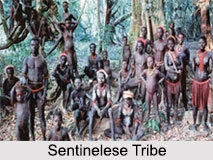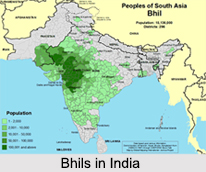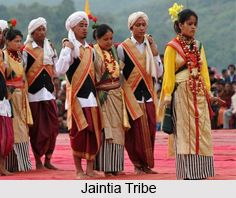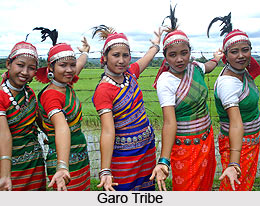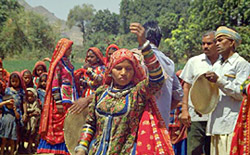Majhwar tribe has always held a place of significance in the state of Madhya Pradesh. They are also settled in some parts of Chhattisgarh. Majhwar tribes are also known as Manjhi. It is believed that Majhwar tribe have actually originated from Mundas, Kawars and Gond tribes. Manjhi literally means `headman of a tribal sub-division`. It has been derived from a Sanskrit word `Madhya`, which means in the centre. In Bengali language, the word manjhi means the ferryman. Most of the people of the Majhwar tribal community carry on conversation in a beautiful language of the same name. There are quite a number of people who have identified it in different names like Majhvar, Manjhi, Manjhia. It is assumed to be a dialect of Asuri.
It is believed that around 500 years back there was a big battle between the Gonds and the Muslims. As the Muslims defeated the Gonds, the Gond people eventually emigrated to Mirzapur. They mainly have five sub-divisions descended from Gond ancestor. These sub-divisions are Tekam, Chika, Oiku, Poiya and Merai. Majhwar Tribe are said to have settled in Mirzapur from Satpura and Vindhyan hills. The Manjhis also appear to have a connection with the Kawar tribe. Interestingly, Majhwars of Sarguja appear to be Santhal and Munda rather than Gonds. Bhainsa clan are divided into Singhan and Lotan sub-clans. These clans consider buffalo as sacred. On the other hand, Baghani Majhwars are named after the tiger. They have this belief that any member of the clan will not attacked by a tiger unless that person has committed any crime or offence. Marriage within the same clan is prohibited. They follow certain unique birth and funeral rites.
Festivals form an integral part of the culture of Majhwar tribes. Karam, also known as Karma, is the festival, which a large section of the Majhi tribes celebrate with lots of enthusiasm and festivity. It is usually held in the month of Bhadra. They are said to be the sub group of Gond community. Certain rituals are associated with the festivals that are celebrated by this tribe. The centre of the ritual comprises the cutting of three branches of Karam tree, which the Majhwar people have installed in dancing ground, popularly called akhara. The branches are called the `Karam Raja.` Karam is also associated with a variety of dances and folk songs. With the entry of the branches into the village, the Majhwar tribes engage in dancing and singing. Immediately after installing these branches, the Karam dancers rotate round the branches throughout the night. The following morning the branches are decorated with garlands and the Karam legends are narrated. Flowers are then thrown over the branches and contributions of curd and rice are made. Afterwards, the blessing of Karam Raja is obtained by the people.
Majhwar tribes are mainly associated with farming and raising of livestock is their second occupation. They have their own tribal deities. Customs of Majhwar tribes are quite similar with other tribal customs.

















